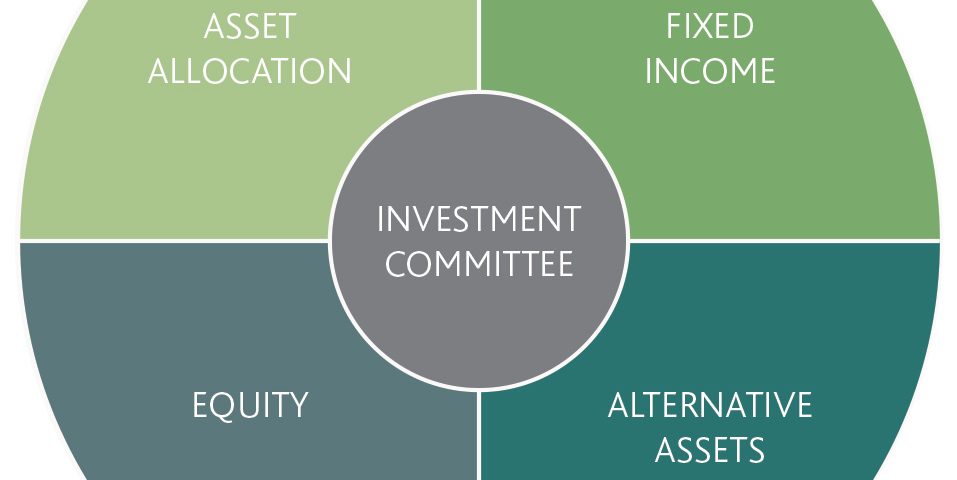
Investment Committee – November 2021
The firm’s Investment Committee discussed how financial markets might face a multi-leg squeeze going into year-end. It stressed the rising energy prices, the infamous supply-chain bottleneck, and the much anticipated Fed tapering of its asset purchases schedule (which, actually, has in the meantime been announced by the Fed during its latest press conference).
The better news is that we believe we will probably be back into a reflationary environment in 2022. Thus, our company tactics are to utilize any significant market nervousness in the coming months to add to our core holdings and position for higher inflation throughout the rest of president Biden’s term.
The chart below shows the 5yr/5yr inflation expectations in the United States. The increase, from lower than 1% to nearly 2.5% in twenty months, is the largest and quickest in a generation.

The rise in oil prices in particular, has a clear cost transfer from the producer to retail. It raises electricity costs, affects food supply, etc. But we argue it might also have a deflationary effect at the same time. All other things being equal, extra money spent on energy might put a halt to retail demand elsewhere. We maintain that energy prices like these are only sustainable when there is excess liquidity in the system.
This brings us to the US debt ceiling debate. This has been off the headlines recently, but the matter is far from resolved. There is now a December 3 deadline for the Congress to sign-off an extended ceiling raise, and we believe that – once again this year – US politicians will drag the matter to the last minute, only at the end agreeing to issue extra debt in the amount of US$ billions. Debt issuance reduces cash from the banking system and results in a form of liquidity squeeze, at a time when energy prices have already crowded out billions of money worth of spending elseplace. Our main scenario is that this will create a dangerous environment for risk assets anytime from today to, say, February 2022.
The Committee also took time to confer on the impact of derivatives activity (particularly exchange-listed options) on global markets and predominantly on the US.
The main points that were brought up for conversation are the following:
- Option market-makers/dealers are the new elephant in the room.
- Following the Lehman Brothers collapse, the Dodd-Frank legislation put a cap on banks’ proprietary risk. Banks therefore cannot hold large option positions in their books and because risk cannot disappear – only transfer to another holder or in time – option dealers have stepped in and today carry such derivatives positioning in their books.
- Because of the explosion of options volumes during the past couple of years, the aggregated risk of dealing in options has spiked to unprecedented levels. Now dealers have to hedge their exposure multiple times (if not continuously) throughout the day. They need to sell the rallies and buy any dips, and this compresses realized market volatility. Their hedging activity dominates the markets.
- During extreme moves, certain derivatives features change sign (from positive to negative) and this obliges option dealers’ to sell during sell-offs, amplifying the downward move.
- The sequence of influence of the market has changed direction. By that, we mean that what used to be Index price -> through banks’ -> an options quote in the exchange, now has become Options price -> through Dealers’ market-making -> Index level. People today are not comfortable accepting that we actually don’t even need the underlying, and clients have to get educated that in reality the price of the underlying may be derived from the price of a an option strategy – and not the other way round.
- In modern markets, identifying dealers’ positioning and leverage are the two main challenges to make informed decisions.
- In KM Cube, we follow an approximation of the option dealers’ derivatives positioning, which – despite all its approximations and assumptions – has successfully triggered entry and exit points for our systematic trading.

Our offering

Unicorn Systematic Strategies
In systematic investments we manage your portfolio based on a set of several well-known trading strategies that offer a sound academic and scientific background. Throughout the years we have implemented and applied these strategies ourselves.
The benefits of systematic strategies are well-known as they eliminate the behavioural bias, reduce costs and increase the probability of profit in a longer investment horizon .

Global Navigator
The flagship of our product offerings is the Incometric Athos Global Navigator Fund. The Fund is a Luxembourg-based UCITS that aims to perform absolute returns in every environment.
Incometric Athos Global Navigator focuses on capital preservation and attempts to minimize correlation to stock and bond prices. Its strategy holds a core portfolio of fixed-income securities plus some high-conviction stocks for the long-term, topped-up with an overlay strategy of financial derivatives to weather the downturns.

Value Stock Selection
One of the most effective ways to identify value stocks is the Piotroski f-score. We employ this metric along with some additional value criteria to limit the universe of more than hundred thousand companies to a few canditates. A ranking methodology then is applied to identify a managble set of companies that we can then deploy in our portfolios. Such a portfolio has the potential to withstand inflationary pressures and benefit from the rotation towards value sectors.

Disruptors
Disruptors companies are companies that have introduced new business models and changed established industries in a significant way. Prominent examples are Amazon, Google, Netflix and many others. Identifying such companies at early stages is considered very difficult and often quite risky as by definition their business model is out of the ordinary and there is no certainty that such model will work.
Apart from the inherent risk in this style of investing, fundamentals are usually poor and one cannot use conventional metrics.
We deploy a three step approach using relaxed fundamental and market criteria, inclusive keywords and weighted ranking.

Structured Note Ideas
Structured notes offer indirect access to alternative risk premia (particularly correlation and
volatility) something that can be explored in your portfolio allocations. Visit out interactive tools site to see our most recent ideas.
Model portfolio allocations
Indicative allocation (Core)
| Asset Class | Low | Medium | High |
| Cash | 68.3 | 34.0 | 16.7 |
| Fixed-Income | 30.0 | 24.3 | 11.7 |
| Equities | 0.0 | 23.3 | 41.7 |
| Commodities | 0.0 | 8.3 | 18.3 |
| Alternative Investments | 1.7 | 10.0 | 11.7 |
| 100.0 | 100.0 | 100.0 |
Tactical (1m horizon)
| Asset Class | Low | Medium | High |
| Cash | 68.3 | 42.3 | 23.3 |
| Fixed-Income | 18.3 | 12.7 | 3.3 |
| Equities | 0.0 | 21.7 | 33.3 |
| Commodities | 6.7 | 11.7 | 21.7 |
| Alternative Investments | 6.7 | 11.7 | 18.3 |
| 100.0 | 100.0 | 100.0 |